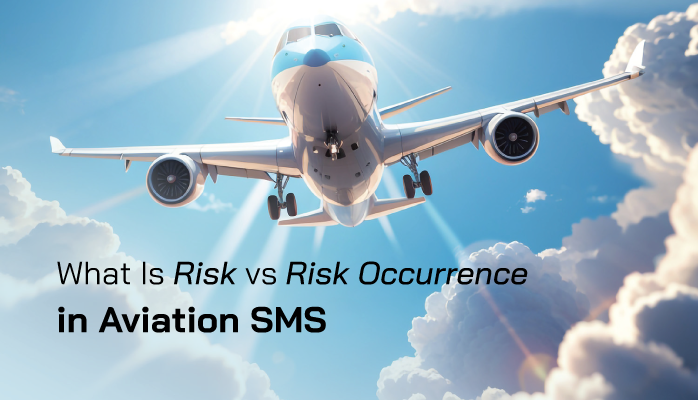Definition of Risk

Risk, in its general form, is what is most often cited when discussing the definition of risk, and the idea of risk.
Risk in general is:
- The composite of severity and likelihood used to rank risk;
- Used in Risk Assessment; and
- Generally spoken in the context of, “The risk of [something bad].”
How Is Risk in General Used in Aviation SMS
Risk levels are assigned to different hazards so that different hazards are used differently. Also, different organizations will define likelihood and severity differently. For example:
- Some organizations will define levels of likelihood in terms of probability;
- Other organizations will define levels of likelihood in terms of the number of occurrences; and
- Different levels of likelihood will be different as well, such as:
- Company A defines low likelihood as one occurrence in 2000 operations; but
- Company B defines low likelihood as one occurrence in 1000 operations.
Based on this composite, organizations will define what their acceptable level of safety is. Or, to put it differently, which risk composites are acceptable and which aren’t.
What Is Most Important Ramification of Risk in General
These above details have an extremely important ramification:
- Modes of risk, in general, are the same – risk is used the same across organizations;
- Actual definition of risk is different in different organization;
- In effect, there is no specific definition of risk that is right;
- The best specific definition of risk will depend on the context (operational environment) in which you are trying to define risk.
So in summary, the important highlights of what is risk are:
- It is used as a composite of likelihood and severity across all organizations; but
- Specific definitions of that composite change depending on the organization.
Definition of Risk Occurrence
Risk occurrence is another common context for the idea of risk. Sometimes when safety managers say “risk,” they don’t mean the composite of likelihood/severity, but they mean the occurrence of a safety mishap.
A risk occurrence is:
- An outcome of a safety event that is negative, such as an accident, safety mishap, etc.;
- A core part of risk analysis (i.e., how did this mishap occur?); and
- Generally spoken of in the context of, “After the runway incursion [risk occurrence] occurred on runway 4.”
Related Aviation Risk Articles
- How to Define Acceptable Level of Safety (ALoS) in Aviation Safety
- How to Monitor the Effectiveness of Risk Controls
- How to Perform Risk Analysis in Aviation SMS Programs
See this article for other important risk management terms.
Importance of Knowing the Different Between Risk and Risk Occurrence
In other words, “risk” is a contextual word. In one conversation about risk, you might be talking about risk in general. In a different conversation, you might be referring to risk occurrence.
Knowing that risk is a contextual word will help you or your team avoid miscommunication and help facilitate communication about important issues. For example, we see with regularity that safety teams are often not on the same page about these terms.
It’s worth clarifying during a safety meeting how your organization defines and uses these terms so that everyone is on the same page.
How Risk Is Used for Risk Mitigation
The word mitigate simply means to lessen in severity. In the context of risk management, risk mitigation is a term that has more subtle implications:
- Lessen the likelihood of something happening;
- Lessen the potential severity of something bad; and
- Lessen the severity of something bad that actually occurs.
It’s important to remember these points when strategizing risk mitigation techniques, as your risk controls should touch on all three points.
For more information about risk mitigation, the following resources should be helpful.
Last updated in March 2025.





